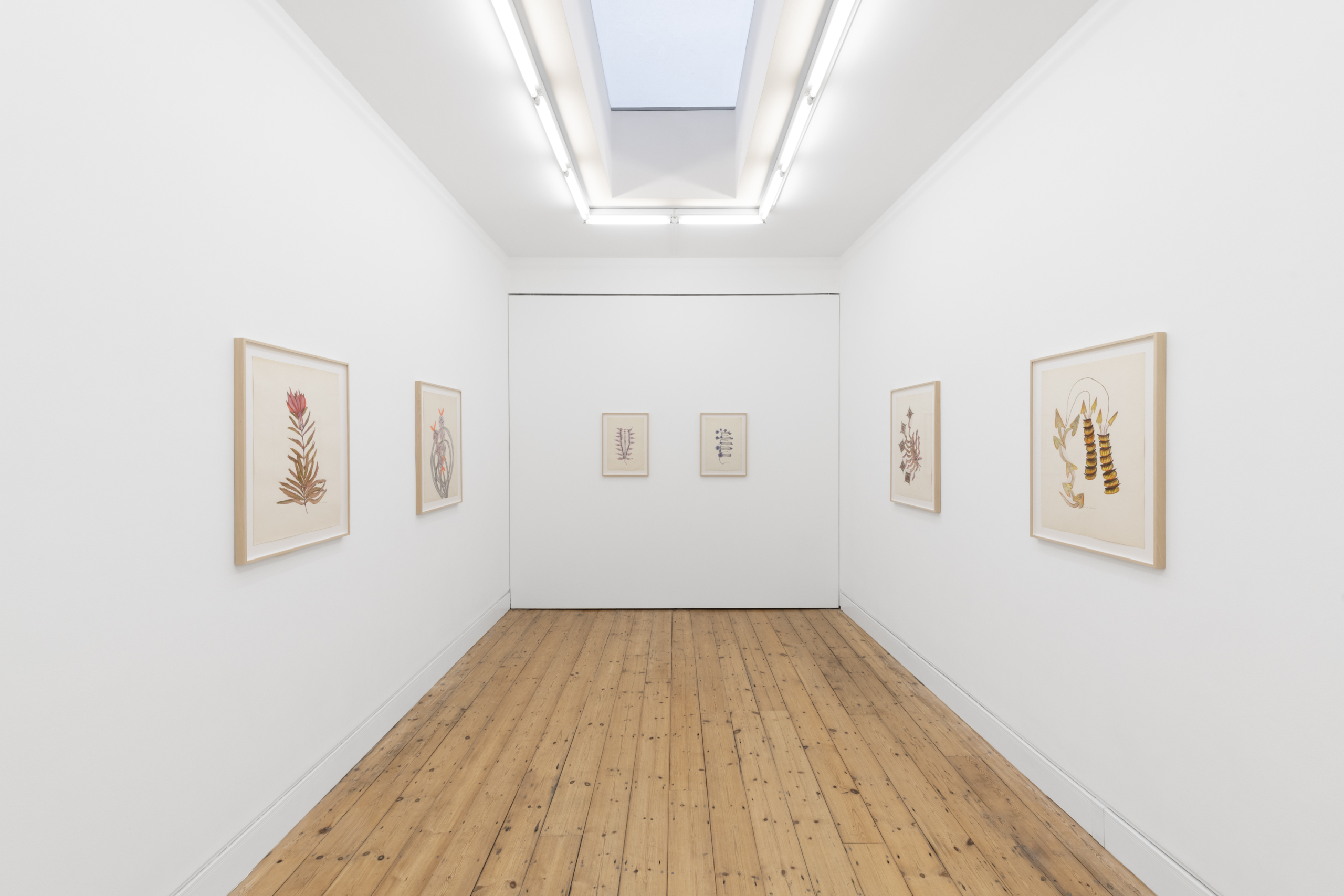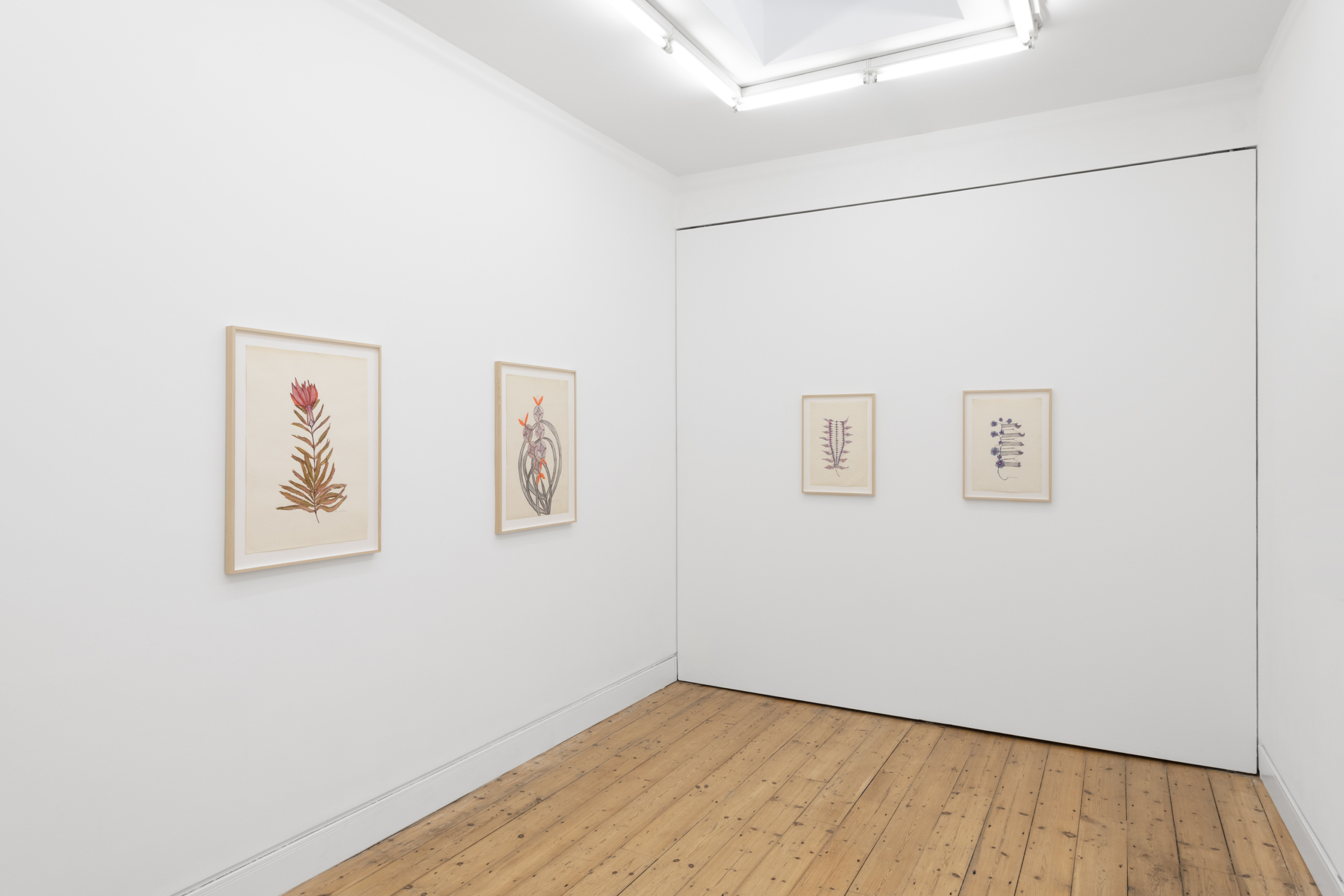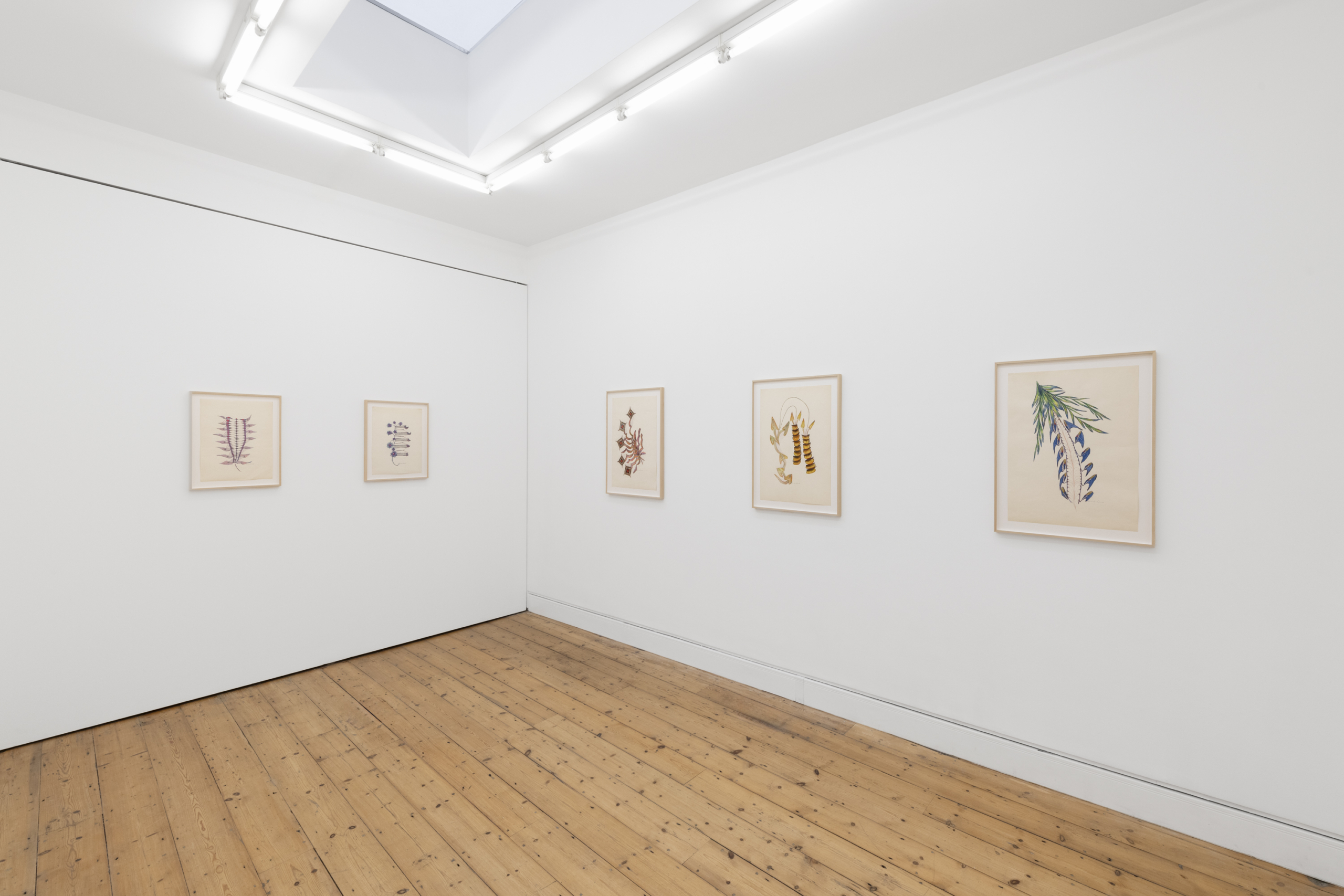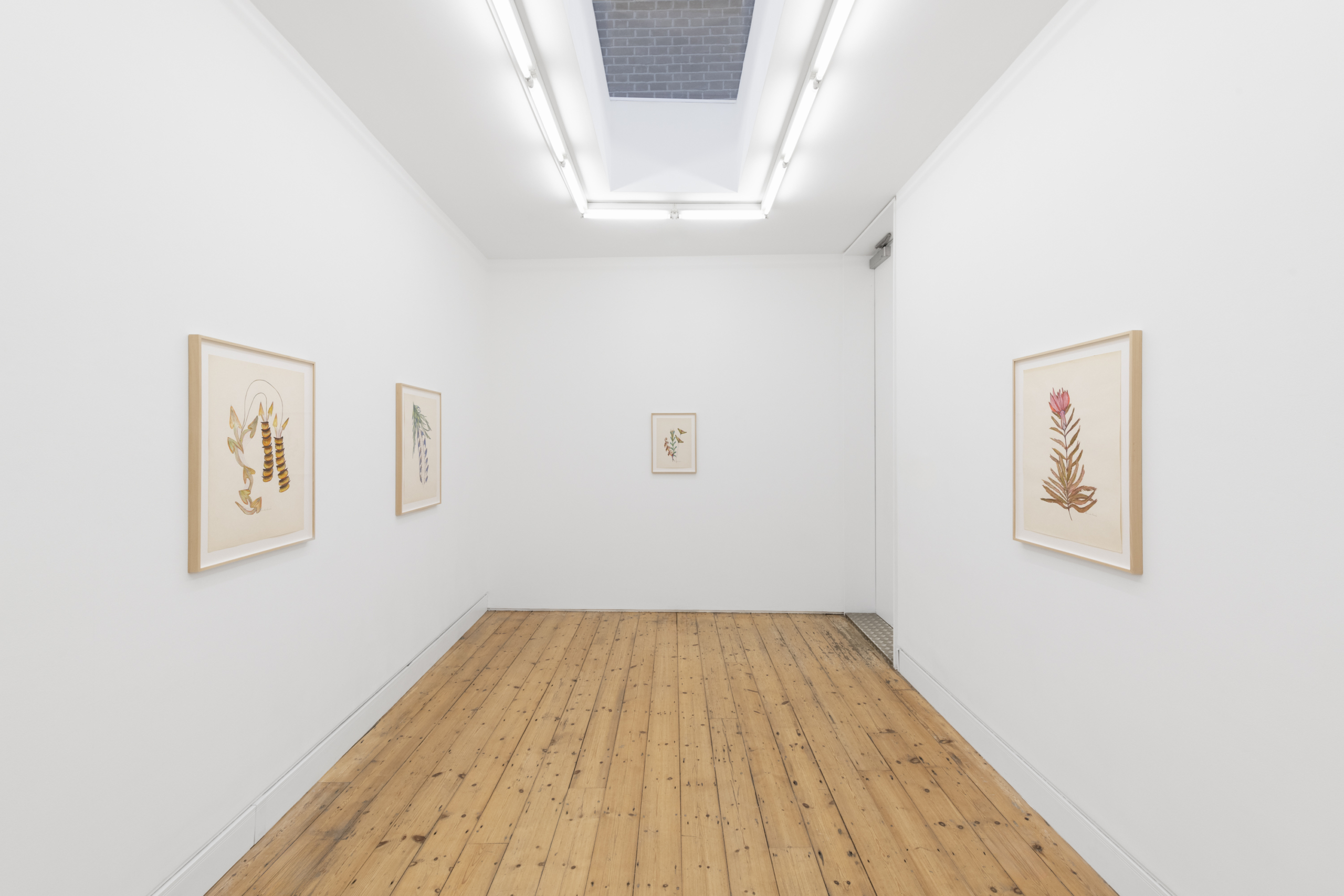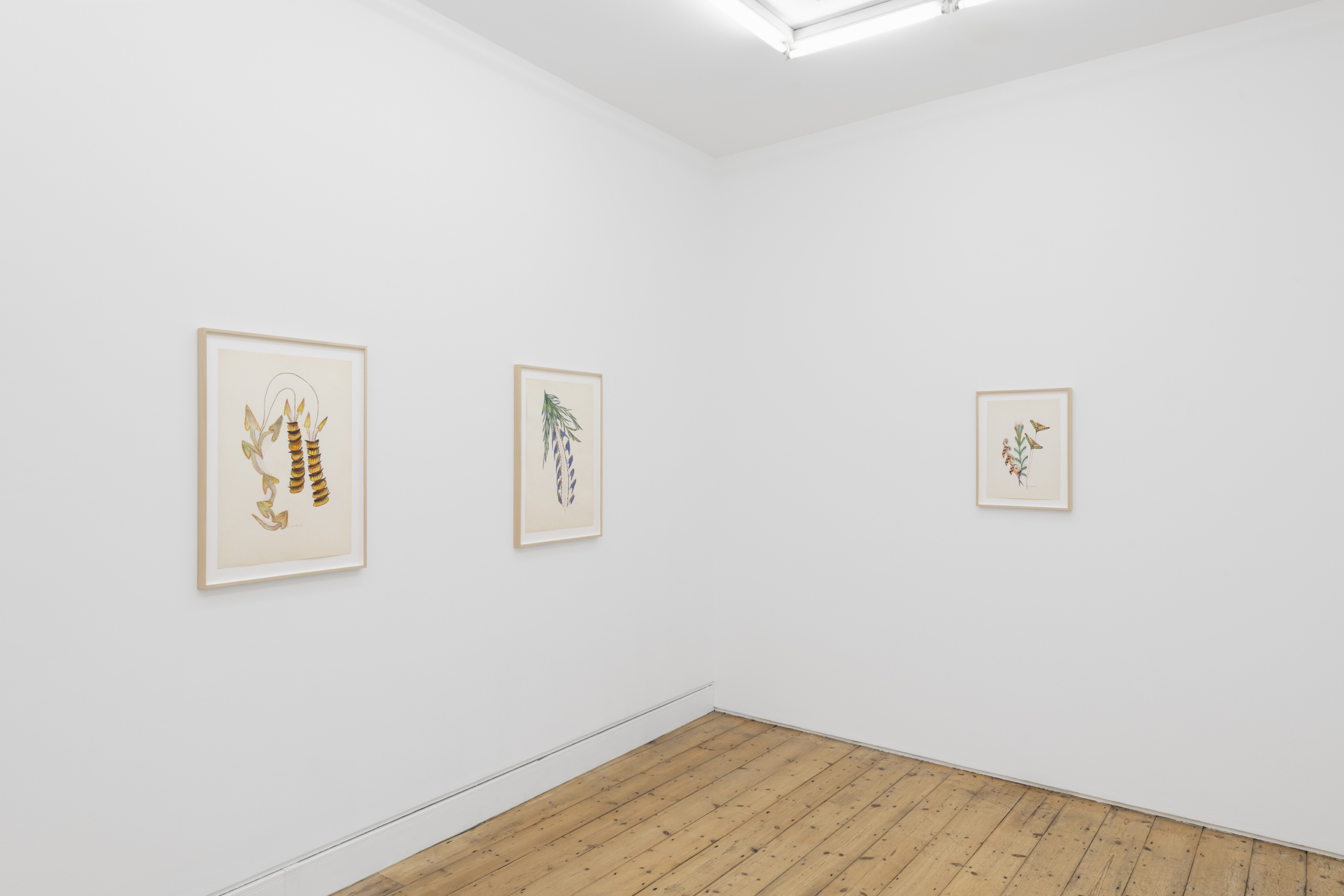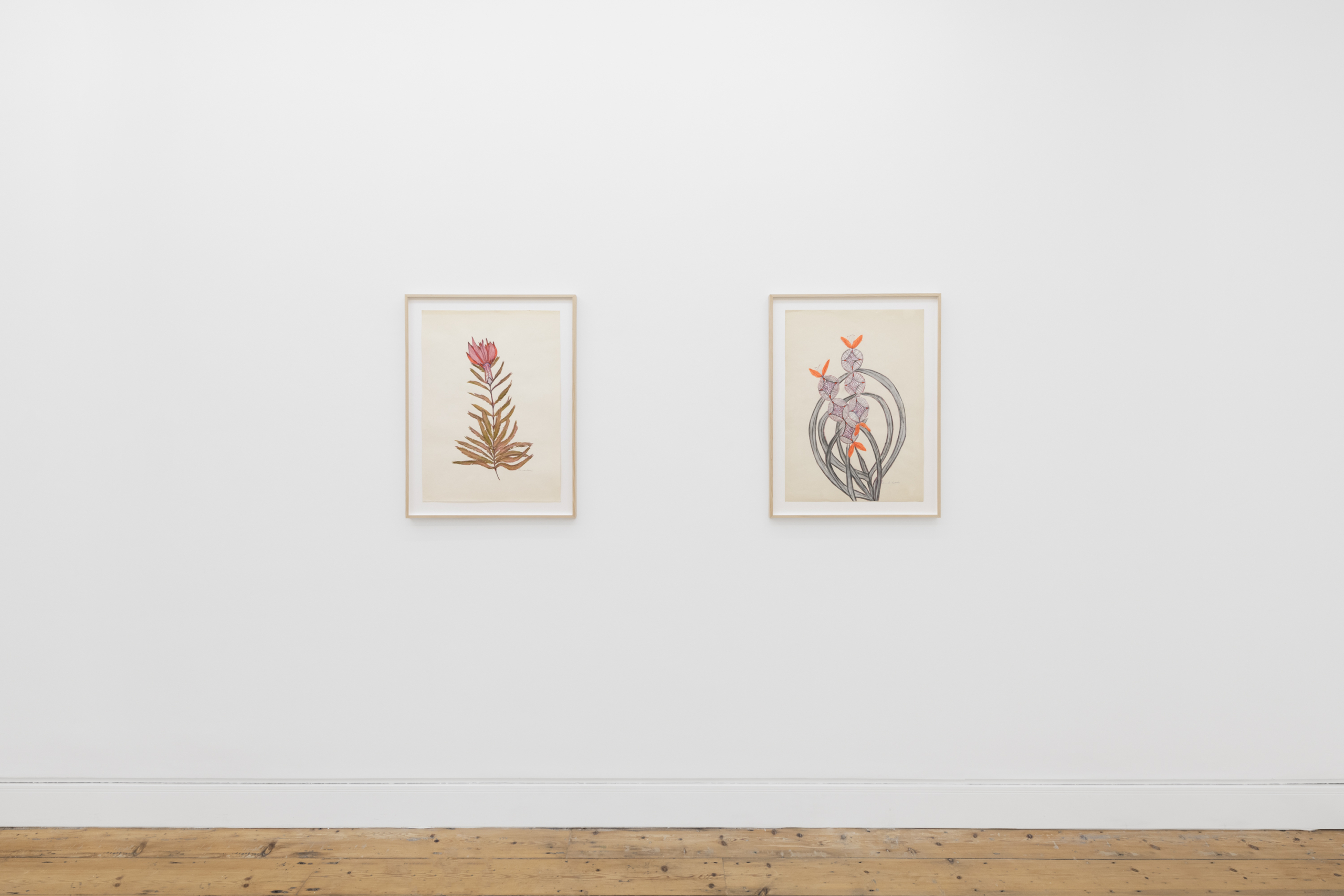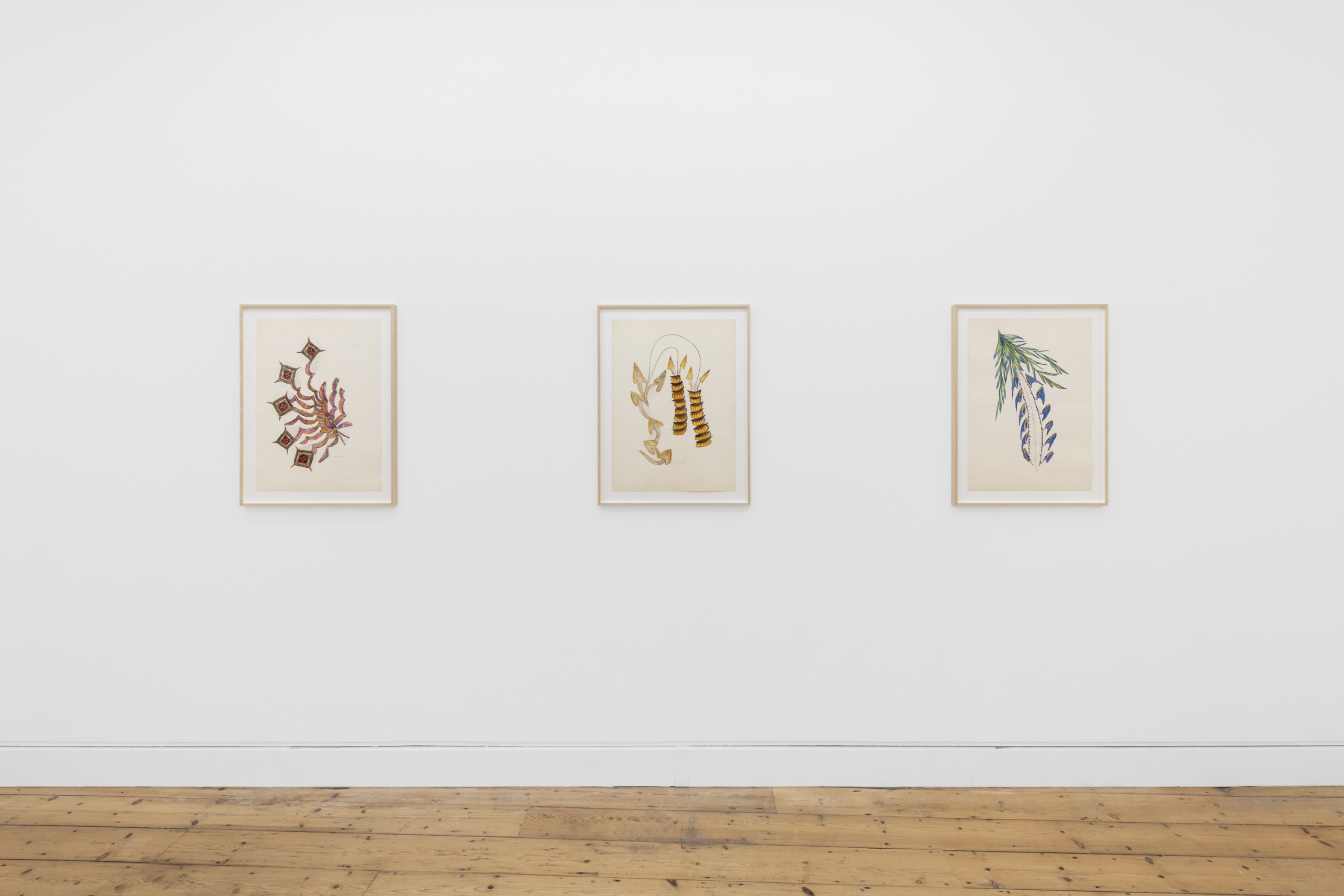The exhibition of satin collages by Anna Zemánková is her first in the UK and follows her presentation at the 60th International Art Exhibition, La Biennale di Venezia.
Born in 1908 in a suburb of Olomouc, then part of Austria-Hungary, Zemánková’s childhood enthusiasm for painting did not initially lead to a career as an artist. Encouraged by her family to become a dental assistant, it was only in 1960 at the age of 52 that she returned to consistently making art again.
Drawing soon became a daily ritual, taking place each morning on her kitchen table while she listened to music. Zemánková’s drawings and collages are organic abstractions, hybrid biomorphic forms which resemble both flowers and insects. These blooming creatures borrow from the terrestrial and the organic, yet simultaneously appear alien and mechanical. Rocket shaped organisms capture the iconography of a time of great technological progress, in which space exploration and ‘conquering the cosmos’ became an unimaginable reality.
The careful anatomical detail with which Zemánková renders her mutating ‘flowers’ is perhaps indebted to her dentistry training. It is an effect that is subtly anthropomorphic and eroticised, often earning her comparisons to Georgia O’Keeffe. Femininity and in particular her own experience of motherhood are central tenets of Zemánková’s practice. Her forms not only appear on the precipice of a transformation, blossoming and flourishing before our eyes, but replicate the schemata of reproductive systems found in plants and other organic and animal forms. For curator and art historian Elena Sorokina, it is through Zemánková’s art that one senses ‘both the physical and neurobiological experience of motherhood’.
In the late 1970s, Zemánková began manipulating her drawings with satin to create three-dimensional collages. As she once stated, ‘Satin shimmers so nicely, and creates a life-like texture. I love working with it. I thought of it myself when I didn’t have any paper. I always arrive at something new out of desperation.’ The works on display use satin to convey the beauty of the supernatural flora, but a beauty that we recognise as simultaneously hazardous and poisonous.
Despite the difficulty of exhibiting publicly under the cultural politics implemented by the communist Party of Czechoslovakia, Anna Zemánková received recognition for her art during her lifetime. Notably, her works were included in the 1979 exhibition Outsiders, curated by Roger Cardinal and Victor Musgrave at the Hayward Gallery in London. While her oeuvre has long been established among the most important representatives of Art Brut, Zemánková is increasingly gaining recognition in a broader context.
PRESS
